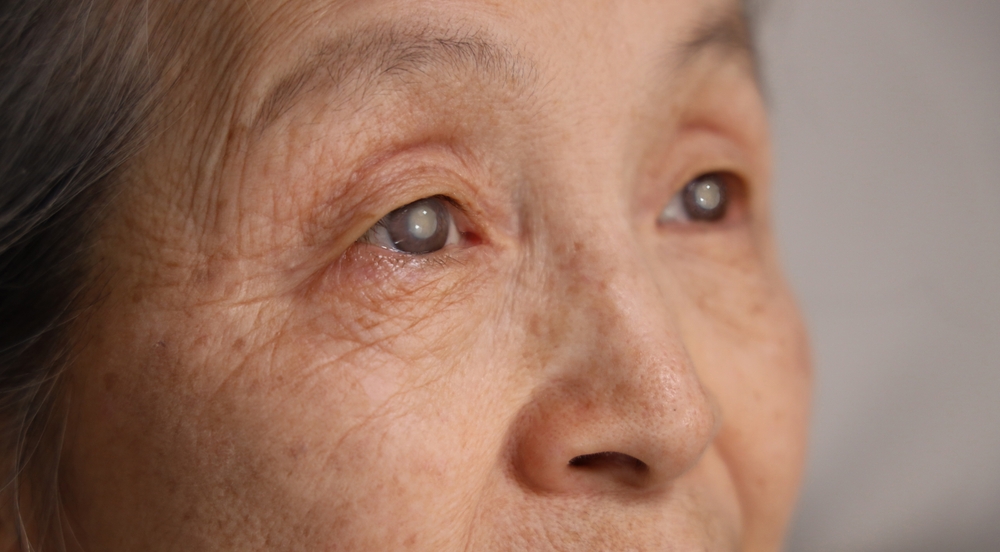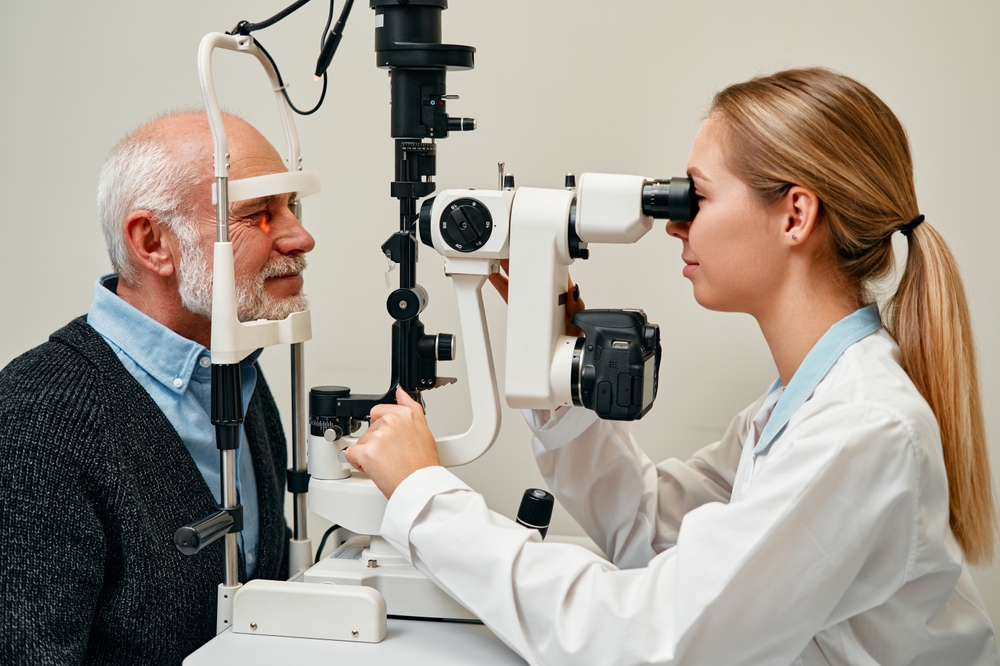
Updated: June 11, 2025
If you’ve noticed subtle changes in your vision lately, maybe struggling to read fine print or experiencing increased glare from oncoming headlights, you might be experiencing the early stages of cataracts. This common eye condition affects millions of Americans, yet many people dismiss these warning signs as simply “getting older.”
The fact is, recognizing cataract symptoms early can make a significant difference in maintaining your quality of life and vision health. Keep reading to discover five warning signs of cataracts you shouldn’t ignore.
Cataracts occur when the natural lens inside your eye becomes cloudy, transforming what should be a clear, flexible structure into something that blocks and distorts light. While this condition is primarily associated with the natural aging process, cataracts can develop at any age and affect people differently based on various risk factors.

The lens of your eye works much like a camera lens, focusing light onto the retina to create clear images. When cataracts develop, this once-transparent lens becomes increasingly opaque, causing vision to become blurred, cloudy, or dim. This gradual process means that many people adapt to their declining vision without realizing how significantly their sight has deteriorated.
Cataract surgery remains one of the most successful and frequently performed procedures today, with excellent outcomes that can dramatically improve quality of life. The key is recognizing the warning signs before the condition advances to a point where daily activities become challenging or dangerous.
One of the most telling signs of cataracts is experiencing blurry vision that develops gradually and becomes increasingly difficult to correct. You might notice that text appears fuzzy, faces seem unclear, or details that were once sharp now appear soft and indistinct.
This type of vision change typically develops slowly, which is why many people initially attribute it to needing stronger reading glasses or a new prescription. In the early stages of cataracts, updated prescriptions may still provide some improvement in vision clarity. However, as cataracts progress, you may find that even frequent prescription changes fail to restore clear vision.
Unlike refractive errors that can be corrected with updated lenses, cataract-related vision changes stem from the clouding of your eye’s natural lens. When your eye doctor determines that your vision cannot be adequately corrected with glasses alone despite trying updated prescriptions, cataracts may be the underlying cause.

Cataracts significantly affect how your eyes process light, leading to uncomfortable sensitivity and problematic glare. You might find yourself squinting more frequently in bright sunlight, feeling overwhelmed by the glare from oncoming headlights while driving at night, or experiencing discomfort from fluorescent lighting in stores and offices.
This light sensitivity occurs because cataracts scatter light as it enters your eye, rather than allowing it to focus properly on the retina. The result is not just discomfort, but also reduced vision clarity in different lighting conditions. Many patients report that activities they once enjoyed, such as driving at night or spending time outdoors, become increasingly difficult and stressful.
As cataracts progress, your ability to see in dimly lit environments becomes increasingly compromised. You might notice that you need significantly more light to read comfortably, perform detailed tasks, or navigate in dimly lit restaurants or theaters.
This occurs because cataracts reduce the amount of light that reaches your retina, making it harder for your eyes to function effectively in low-light situations. Many patients describe feeling like they’re looking through a dirty window or that everything appears darker than it should.
This symptom can be particularly frustrating because it affects so many daily activities, from reading menus in restaurants to safely navigating stairs in dimly lit areas.
The appearance of halos around light sources is a distinctive symptom that many people find particularly bothersome. These rainbow-colored or white rings around street lights, car headlights, or indoor lighting can be both distracting and potentially dangerous, especially when driving at night.
While halos can occur with various eye conditions such as glaucoma, they are commonly associated with cataracts. In cataract cases, halos occur because the clouded lens causes light to scatter as it passes through, creating these circular patterns around light sources.
Cataracts can significantly alter your color perception, making the world appear less vibrant and clear. You might notice that colors seem muted, washed out, or have a yellowish tint. This happens because cataracts, particularly nuclear cataracts that form in the center of the lens, often develop a yellow or brown discoloration that filters the light entering your eye.
This yellowing effect is especially characteristic of nuclear sclerosis, the most common type of age-related cataract. As the lens nucleus gradually hardens and yellows over time, it acts like a filter that affects how colors are perceived.
This gradual color change can be subtle at first, which is why many people don’t realize how much their color vision has been affected until after successful cataract surgery. Patients frequently express amazement at how bright and vivid colors appear following their procedure, describing it as seeing the world in high definition for the first time in years.
Cataract development varies dramatically from person to person, making it difficult to predict exactly how quickly they’ll progress in any individual case.
Factors that influence progression speed include:

Age: People in their 60s and 70s may typically experience slower progression than those who develop cataracts earlier in life, though progression can vary widely among individuals regardless of age.
Underlying health conditions: Diabetes, high blood pressure, and autoimmune disorders can accelerate cataract formation.
Medications: Long-term use of corticosteroids can speed up development.
Environmental factors: Excessive UV exposure, smoking, and poor nutrition may contribute to faster progression.
Eye injuries: Trauma to the eye can cause cataracts to develop more rapidly.
The key is regular monitoring through comprehensive eye exams, as your eye doctor can track changes over time and recommend surgery when cataracts begin significantly impacting your quality of life.
Are you experiencing symptoms of cataracts? Schedule a cataract evaluation at Discover Vision Centers in Kansas City, KS, today to take the first step toward clearer vision and improved quality of life.
Our Olathe Location is Closed